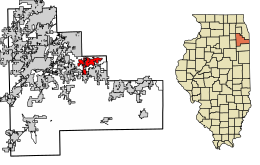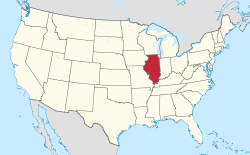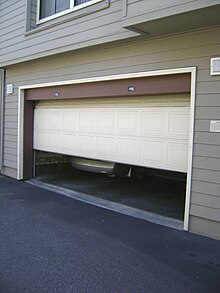What type of garage door Opener and Door Do You Have? What do you do when your garage door suddenly stops working? .
If garage doors suddenly stop functioning, it could be a stressful and uncomfortable experience.Whether you're hurrying for work, or trying to pull your car to the garage after a heavy rain an unresponsive door is the last thing you need to have to deal with.The initial step to tackle this issue is to identify the kind of garage door and opener you are using, as this will significantly affect your approach to diagnosing and fixing.
Garage doors are generally classified into several categories based on their design and operation.The most commonly used kinds are roll-up, sectional as well as tilt-up doors.Sectional doorways are constructed from panel sections connected with hinges that allow the door to open and close by bending as it closes and opens on the vertical track.Roll-up doors, typically seen in commercial spaces are made from slats that roll up into coils.
Tilt-up doors, on the other hand are a single piece of furniture that tilts out and up as it opens. Belt drive garage door openers are quieter however, they employ a rubber band rather than chain. They're a good option for garages that have attached garages. Screw-drive garage door openers use a steel threaded rod for moving the garage door. This is the perfect option for noise and cost.
What is the #1 Thing to do when your Garage Door Stops Working? - inventory
- Chicago metropolitan area
- The Home Depot
- email address
The next step is to examine your garage door opener, and identify the model. Check the plug and breaker to confirm that the opener is running. Check the release cord for manual operation to make sure that it hasn't pulled. This could result in the door being disconnected from the opener. Examine the tracks and rollers of the door to determine if there are any damage or obstructions.
What is the #1 Thing to do when your Garage Door Stops Working? - inventory
- Cairo
- length
- golf
Resetting your opener is a solution to any electronic malfunctions. Consult the manual of the model you have to determine the precise steps. Some openers can be reset with a push of a button while others require that the unit be disconnected and after that, it must be re-plugged.
Spring tension is high and can cause danger to repair them without the proper tools.
In conclusion, when your garage door suddenly stops functioning then the
Look for any obstructions or other debris
If the garage door abruptly ceases working, it can be extremely frustrating and confusing particularly if it's element of your daily routine.
One of the most important and most useful steps to undertake when faced with this problem is to examine the door for any obstructions or debris.This simple yet effective action could be the answer in identifying the issue and then restoring function to your garage door.Even a small obstruction could hinder your garage door from working as it should.
Begin by looking at the tracks on the opposite side of the door.Look for any obvious obstructions or accumulation of debris.If you notice anything unusual like a twig or a stone stuck to the track make sure you remove it.
There are times when the problem may not be evident immediately, so it's advisable to move your fingers along the track to feel for any hidden obstacles.Ensure that the tracks are aligned properly in addition, as any misalignment could cause the door to become jammed.Check the hinges and rollers. The parts should be free to move without a thump. If they are stuck or sticky, this could be caused by rust or dirt. Cleaning and lubricating them can generally solve the issue.
Be sure to inspect the area surrounding the door.
What is the #1 Thing to do when your Garage Door Stops Working? - inventory
- mayor
- wind power
- inventory
Check the sensors if the door does not open after you have cleared any obstructions.
Modern garage doors come with safety sensors that stop doors from closing in case there is something within the path.Make sure these sensors are in good condition and aligned correctly, as dust or improper alignment can cause them to fail.By keeping your walkway clean and avoiding obstructions, you can avoid calling a professional to resolve a problem that's usually simple.
Examine the wall switch and remote control
It's essential to inspect the wall switch and remote control.
These components are often the reason for the garage door not responding, and performing a thorough check could save you time and potentially avoid unnecessary costs.First, consider the remote control.This handheld device is your primary tool for operating the garage door without direct physical interaction.Over time, remote controls can experience issues such as drained batteries, signal interference, or even internal damage.Start by replacing the batteries with new ones.It might seem simple, but dead batteries are a common reason for a garage door not responding.If the problem persists after replacing the batteries, try reprogramming the remote according to the manufacturer's instructions.Additionally, ensure that the remote is within the recommended range and that there are no obstructions blocking the signal.
The wall switch is a critical component of the garage door system.
If you are comfortable you are comfortable, then open the switch to inspect for any damaged or broken wires.In some instances, the wall switch might seem to be functioning properly but the door remains unresponsive.This could indicate a problem in the garage door opener unit itself or other parts like the sensors or the door tracks.However beginning by utilizing the wall switch and remote control is the logical first step.
You can eliminate these issues before you begin more complex troubleshooting.In the end, examining the wall switch and the remote control in the event that your garage door stops working is a sensible and simple approach.By inspecting these parts first, you'll quickly identify if the issue is within these components or if further examination is needed.This initial examination is not just time-saving but also provides assurance that you've taken all the steps necessary to pinpoint the issue correctly.
Manually test the door's balance
It can be a hassle and frustrating when the garage door ceases functioning. The garage door is an essential part of your house, as it offers security, protection against elements, as well as easy access to your car as well as storage.
Manually testing the balance of the garage door could be an important step should your door be malfunctioning. This easy but efficient method will assist you in identifying any issues that could be causing it and help prevent further damage.The equilibrium of a garage door is crucial for its proper functioning.A properly balanced door makes sure that the opener won't have to work harder than necessary, reducing the risk of wear and wear on the motor and other parts.An uneven door, on the other hand could cause more severe issues over time for instance, misalignment or broken springs, or a complete system failure.Therefore conducting a test of the door's balance is a vital diagnostic step that can assist in determining whether there is a problem with the door itself or the opener mechanism.
Begin by disconnecting the garage door opener.
Many garage doors have a release mechanism. It is typically with a red handle or cord that lets you disengage the door from the motor.Once the door is disconnected then carefully raise it up to around waist-high, and then release it.A properly balanced door should remain stationary or move slowly.If the door falls fast or jumps up, it indicates an imbalance.It is recommended to speak with a professional to help you adjust the springs so that your garage door is correctly balanced. This will not only solve the problem but will also improve the longevity and durability of your garage door.
Manually testing the balance of your garage door is a critical first step to take when it suddenly stops working.
This helps determine whether the problem lies in the door's balance, or in another place within the system.By realizing the importance of balancing your door and dealing with any issues immediately you will be able to avoid any damage to your garage door and ensure that the garage door is operating smoothly and safely for the years to follow.Examine the Tracks and Rollers
When you're faced with a garage door that suddenly refuses to operate, your first response is to panic or think of the most difficult technical issues.However most of the time, the solution is in a straightforward inspection of the tracks and rollers.This crucial check will make a difference in time and expensive repair costs which is why it's the first that you must prioritize in the event that your garage door ceases working.
Tracks and rollers are critical elements of your garage door's operational system.The tracks are the metallic rails that help guide the door as it opens and closes. The rollers are tiny wheels that travel along the tracks.
Over time, these parts could become dirty, misaligned, or worn out, leading to operating issues.Begin by visually inspecting the tracks for obstructions.Dust dirt, grime, and even tiny debris may accumulate on the tracks, leading the rollers to struggle while they travel across the path.Cleaning the tracks using a damp sponge can usually solve these issues.Make sure that you dry them thoroughly afterward to stop rust from forming.
The next step is to verify the alignment of the tracks. The tracks should be straight and parallel. If they look bent, or not in alignment, the door might jam. You can hit the section that is not aligned to its proper position using mallets made of rubber. However, if there is a lot of damage, it's better to call professionals who can re-align the tracks to their proper alignment.
The inspection of the rollers is equally important.Over time, the rollers may be damaged or worn out especially if made of plastic.
Metal rollers that have bearings last longer, and provide better performance.Additionally, lubrication also plays a essential role in maintaining the smooth operation of the tracks and rollers.Applying a silicone-based lubricant can decrease friction and reduce wear.Make sure to lubricate all moving parts, which includes the hinges and springs, to ensure the garage door runs effectively.
When you make sure that the components are in good alignment and properly lubricated, it is possible to make sure that the garage door is restored to full function.
Inspecting and maintaining these parts will also help prevent any malfunctions from occurring in the future. This can prolong the life of the garage system.Look for obvious damage or wear
If a garage door suddenly stops working, it can be annoying and disconcerting especially if you're going out or trying to make sure your home is safe for evening.While there could be various reasons for the malfunction but one of the most efficient and swift actions to take is to examine the door for obvious damage or wear.This initial inspection is likely to uncover the cause of the issue, which allows the door to be repaired quickly and efficiently. solution.
Garage doors are a complex system that is made up of a variety of components, including springs, cables as well as rollers and tracks each one of which plays a crucial role in its seamless operation.Over time, these components can experience wear and tear because of regular usage and exposure to environmental factors.
When you conduct a thorough examination, you will be able to identify any obvious indications of damage that could be making the door malfunction.Begin by checking the springs, which are vital for the lifting and lowering of the door.Look for signs of rust, breakage or misalignment.A broken or worn spring can make the door inoperable, and it is essential to resolve this problem promptly.Next you should look at the cables and look for fraying or broken cables that may hinder the door's movement.Similarly, inspect the tracks and rollers for any debris, dents or obstructions that might be hindering the door's path.
Another important area to pay attention to is the door itself.Look for any obvious damage, bends, or warping that may affect its balance or alignment.Pay attention to the weather stripping on the top of the door as a damaged strip can hinder the door from sealing properly.
Check that the sensors at the door are also clean and in alignment. Incorrect alignment or dirt could cause the sensors to fail and stop working.A visual inspection can be beneficial, but it's important to keep in mind that not all problems are immediately obvious. If you don't see any obvious signs of wear or damage you may have to consult with a specialist to pinpoint the issue.
This approach will not only help you identify the problem faster, but it will also enable you to take steps to restore the functionality of your garage door.
Being proactive and vigilant, you can ensure the longevity and security of the garage door.Verify for Springs and Cables
When your garage door suddenly stops working it could be annoying and inconvenient.One of the most essential actions you can take in this scenario is to check the springs and cables.These components are vital to the functioning of your garage door and any issues related to them are typically the cause of a broken door.
Springs play an important role in the operation of your garage door by neutralizing the door's weight.When the door is moving, the springs support most of the burden and allow the door to close and open smoothly.There are typically two types of springs, torsion springs and extension springs.Torsion springs are installed over the garage door and twist to store energy. On the other hand, extension springs are situated on either side of the door and extend to allow the required force.
The springs could get worn out break, or lose tension, which can cause operational problems.Additionally, cables are important since they work with springs to raise and lower the door.They are typically made from steel and designed to withstand substantial tension.However they are susceptible to suffering due to wear and tear, fray or snap due to the extreme pressure they're under.A broken cable can result in the door becoming unbalanced or become completely inoperative.
In the process of assessing springs and cables, start by visually inspecting them.Look for indications of rust, wear or fraying.If you spot a broken spring or cable It is important to refrain from using the door until the problem is resolved, as forcing it can cause more harm or lead to an accident.If springs appear to be intact however the door is not functioning, it might be that they've lost tension and need adjustment.
It's crucial to emphasize security when working with garage door parts.
Cables and springs are held at pressure and could result in serious injury when mishandled.If you're not familiar with garage repair, it's advisable to consult an expert technician.They have the necessary equipment and know-how to properly fix or replace these components making sure your garage door is operating correctly and securely.In conclusion, when your garage door suddenly stops working, assessing the springs and cables is a key step in diagnosing the problem.Understanding their role and potential issues can help you determine whether a simple adjustment is needed or if professional intervention is required.Taking prompt action not only restores functionality but also ensures the safety and longevity of your garage door system.
You should contact a professional Technician
Your garage door may suddenly stop working, causing you to lose time. This could expose your home to danger.
Although it may be tempting to get your toolbox and attempt doing it yourself however, the best option is to think about calling a professional technician.This option not only assures your safety but also offers an effective and long-lasting solution to the issue.Garage doors are complex systems composed of various components such as springs, cables, tracks, and electronic parts.Each of these elements plays a crucial role in the door's operation, and a malfunction in any part can cause the entire system to fail.Without proper knowledge and experience, attempting to fix these issues can be dangerous.For instance, garage door springs are under high tension and can cause severe injury if handled improperly.Professional technicians are trained to deal with these risks safely, using the right tools and techniques to handle repairs.
Furthermore, a skilled technician has experience and expertise that a layperson does not possess.
They can quickly diagnose the issue and identify whether it's a minor problem, like a misaligned track, or something more serious, like a broken spring.This expertise not only saves you time but also prevents the potential for further damage that can occur with incorrect handling.Professionals also have access to high-quality parts and can ensure that replacements match the specifications of your existing garage door system, leading to better functionality and longevity.Furthermore having a professional on your team can be more affordable in the long run.While a DIY method may seem less expensive initially, the potential for errors is very high. This can result in more extensive and costly repairs in the future.A professional technician can complete the task correctly the first time, minimizing the risk of issues recurring.
Many technicians also offer guarantees on their work, giving you peace of mind knowing that in the event of something going wrong, you're covered.A professional could save you a lot of time and hassle.Trying to learn the intricacies of garage door mechanics and purchase the appropriate tools, and execute repairs can take hours or days.In the opposite, a technician is able to fix the problem quickly, and allow you to go back to normal without any unnecessary delays.
In the end, even though the urge to fix your garage door yourself may be strong, calling an expert technician is the most secure option, the most efficient, and in the end, the most practical option.Their knowledge, expertise as well as access to top-quality parts, as well as their ability to complete quick and precise repair work will make sure that your garage door is up and running at a high level and will protect your property and your valuables.


















